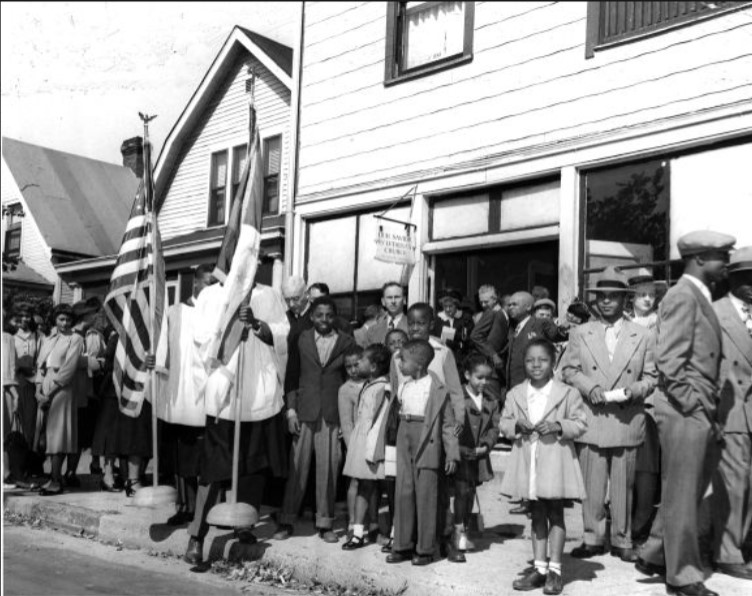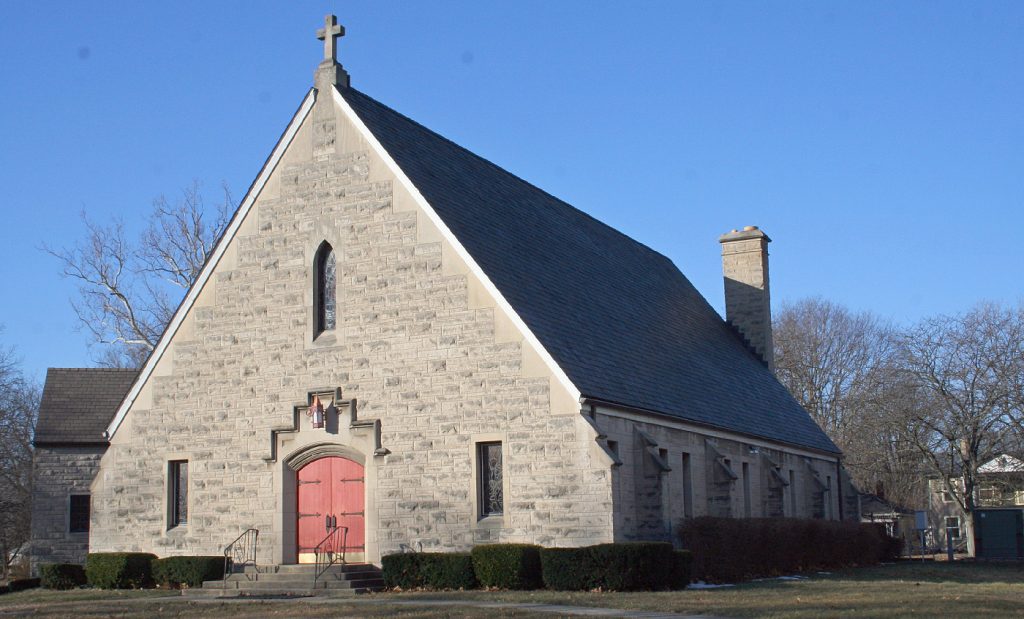Located at the corner of West 25th Street and Fall Creek Parkway, Our Savior Lutheran Church is a historically Black religious congregation established in 1939 as a Sunday school in what was then a predominantly white neighborhood. Its founding represented an effort to promote racial and multicultural unity in the face of widespread segregation.

Jeanette Sims, an African American woman who came to Indianapolis on a mission from the Lutheran Church Missouri Synod (a more conservative sect of Lutheranism) to promote membership in the denomination, recruited the church’s first pastor, Henry Scheperle, a white minister. The first Sunday school met on November 12, 1939, in a former Standard Grocery store at 310 West 25th Street. A small building behind a residence at 325 West 42nd Street became the second home of the Sunday School in June 1940.
The congregation, which the Missouri Synod and the Federation of Lutheran Churches of Greater Indianapolis supported, bought two parcels of land and began a $40,000 fundraising campaign to construct a church building in 1941. A World War II-era building moratorium along with segregationist laws delayed construction. The church finally received building permits in 1946 and selected , prominent Indianapolis architects who had designed , the city’s first federal housing project that served African Americans, for the building’s design.

Russ and Harris drew on the Tudor and Gothic Revival styles, rooted in medieval Europe, for their plans. The building was constructed with limestone ashlar, finely cut and worked rectangular, cuboid-shaped stones laid out roughly in a brick-pattern layout. It has strong gable ends and tongue-and-groove, wood entrance doors. A rose window sits over the chapel, and other stained-glass windows adorn the structure. The interior of the church features heavy timber scissor trusses that support the ceiling of the sanctuary.
, a civil rights activist who served as director of the African American for 35 years, was an important early member. In 2000, the congregation expanded the church by adding a large annex, consisting of a business office, two classrooms, an elevator, an exterior ramp, and a basement dining hall.
In May 2018, Our Savior was listed on the National Register of Historic Places. Later that year, the church caught on fire. The congregation carefully restored and repaired the building. The church remains a member of the Lutheran Church Missouri Synod, and it reports a membership of 50 families.

Help improve this entry
Contribute information, offer corrections, suggest images.
You can also recommend new entries related to this topic.

